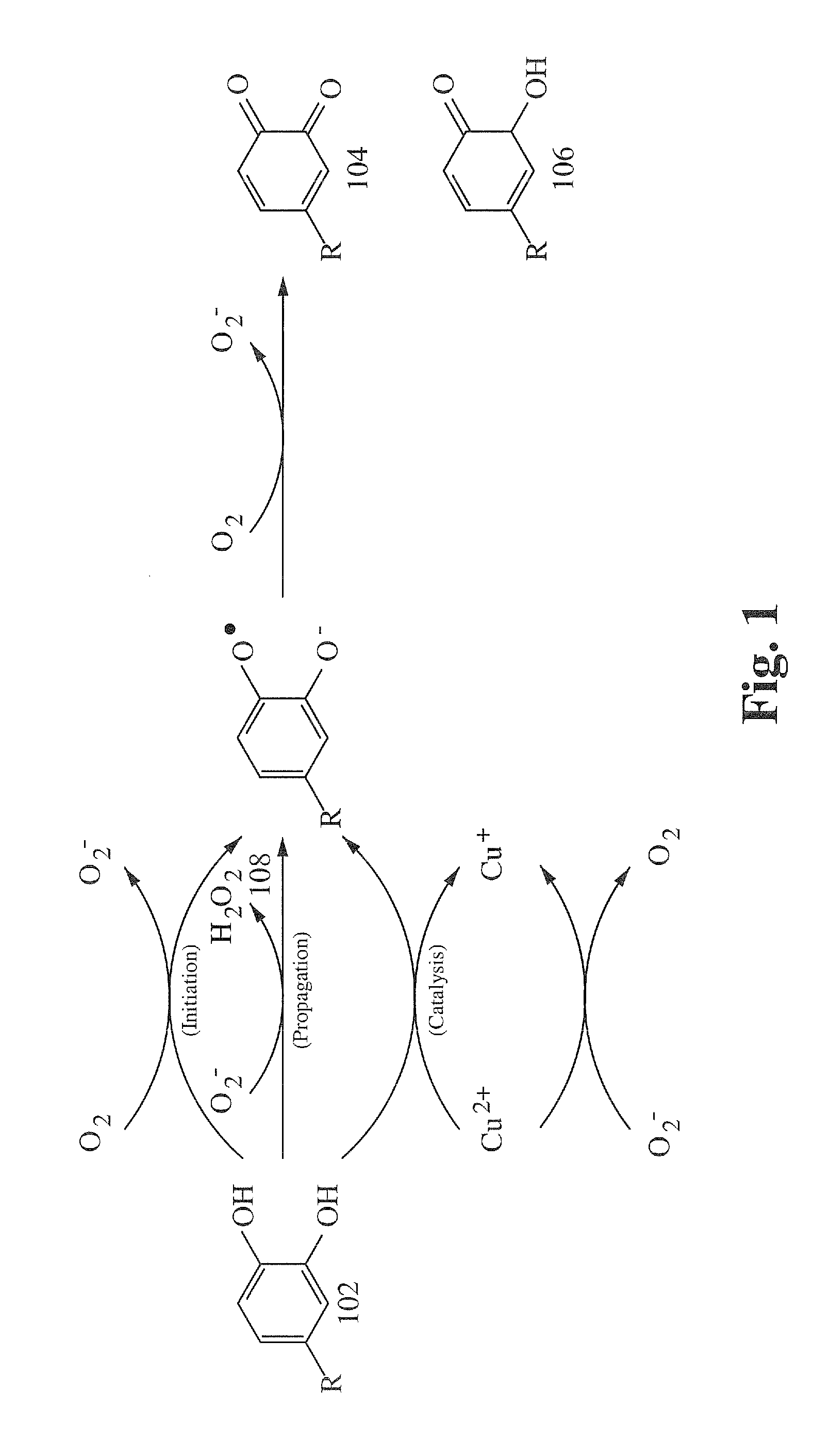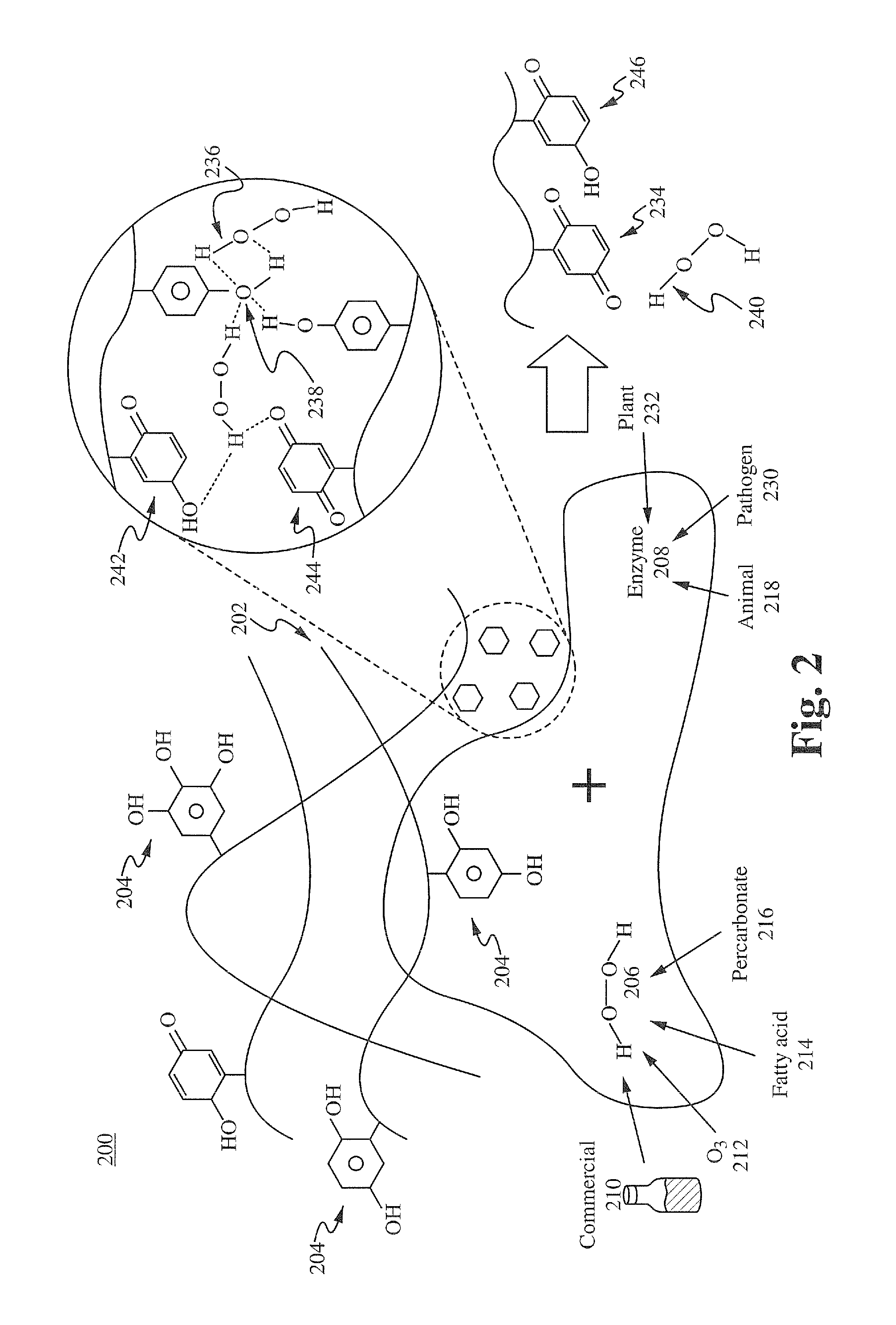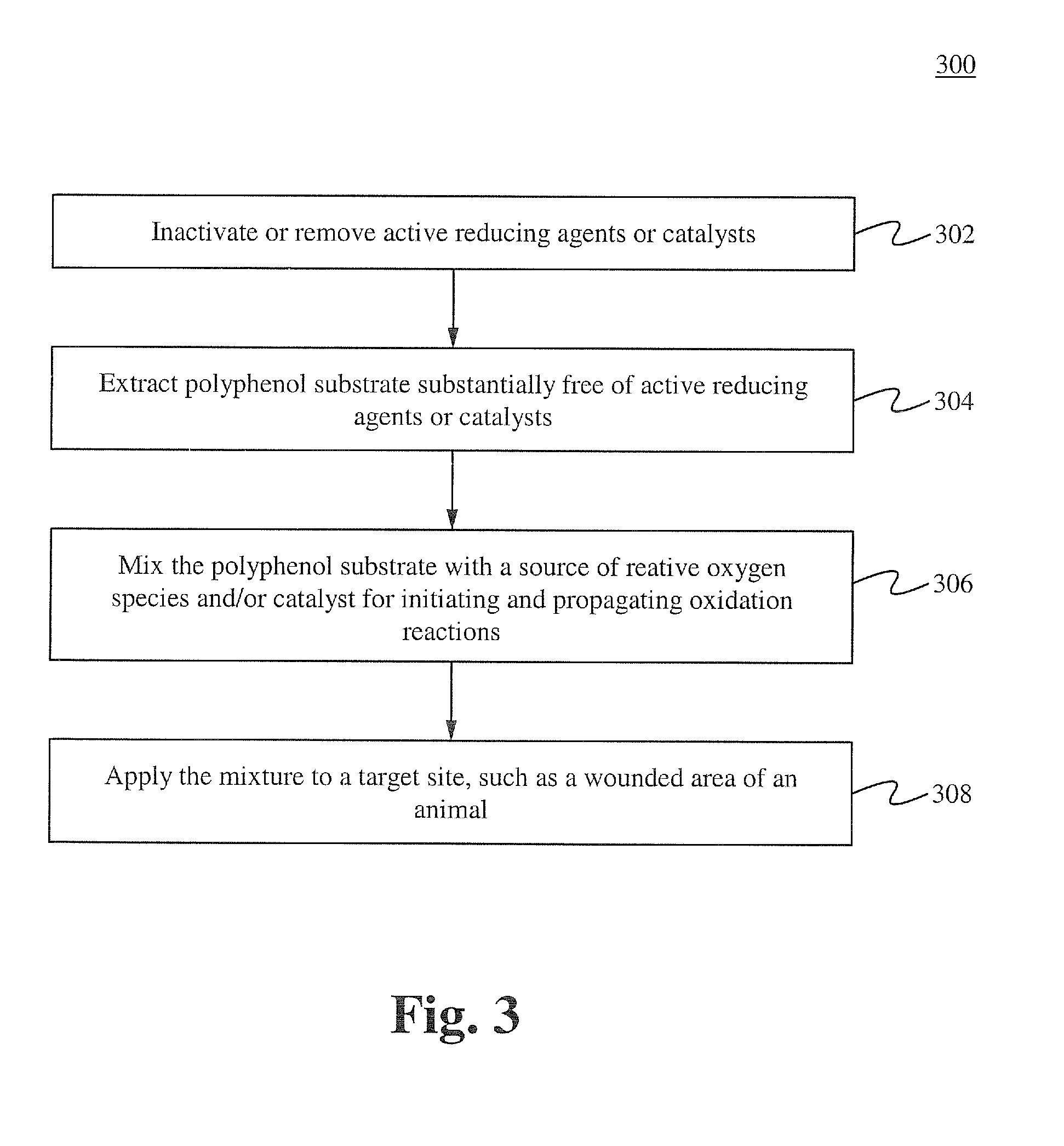Method and material for site activated complexing of biologic molecules
a site-activated complexing and biologic technology, applied in the preparation of sugar derivatives, peptide/protein ingredients, plant/algae/fungi/lichens ingredients, etc., can solve the problems of large number of immune effectors that can be extremely metabolically expensive, direct oxidative response energy cost, and large number of immune effectors, so as to reduce the external stimulation of immune response and improve the utilization of nutrition
- Summary
- Abstract
- Description
- Claims
- Application Information
AI Technical Summary
Benefits of technology
Problems solved by technology
Method used
Image
Examples
experiment 1
[0114]Three samples of purified powdered bovine serum albumin (BSA) were prepared in aqueous solution. Sample #1 contained BSA only. Sample #2 contained BSA and polyphenol oxidase. Sample #3 contained BSA, polyphenol oxidase, and hydrogen peroxide. Each sample showed similar steady state turbidity after 30 minutes as measured by a spectrophotometer. An aqueous solution of polyphenols (tannin) from Chinese Gall was added to each of the samples. After one hour, Sample #1 showed little visible change. Sample #2 exhibited an increase in turbidity from increased particle size, indicating minor protein coagulation. Sample #3 exhibited heavy precipitate on the bottom of the test tube and a lack of turbidity, demonstrating that a substantial increase in protein coagulation can be achieved by the enzymatic reaction of polyphenols with a source of reactive oxygen species.
experiment 2
[0115]A solution of Chinese Gall and hydrogen peroxide was added to (1) a tube containing powdered chicken egg white (the desiccation processes used in manufacturing powdered egg white denatures enzymes) reconstituted in water and (2) a tube containing fresh chicken egg albumin in water. Much greater precipitation was observed in the fresh chicken egg albumin sample, demonstrating that plant polyphenols can be catalyzed by enzymes of animal origin to increase protein binding consistent with quinone formation exhibited in plant wounding.
experiment 3
[0116]Formulation A was prepared using the method described below. One gram of commercial green tea powder was prepared in 1 liter of deionized water in a 1 liter Pyrex beaker and allowed to extract at room temperature for 6 hours. 35% food grade hydrogen peroxide was added to the solution and allowed to sit for 4 hours, then filtered through a 2 micron mesh media or filter. The resulting stock solution was diluted 1000:1, 200:1, and 100:1 with 18 Mohan water. 15 ml of dilute solutions was added to equal part culture solutions containing 10 e7 wild strain E. coli cultures (water controls) and allowed to incubate at 37° C. At 2 hr, 4 hr, 6 hr, and 8 hrs, a sample from each test series was flooded on agar plates and incubated, and manual colony counts were performed. The 100:1 sample achieved 100% kill at 4 hrs, the 200:1 achieved 100% kill at 6 hrs, and the 1000:1 was only bacteriostatic. This demonstrates the feasibility of manufacturing a botanical based composition with high germi...
PUM
| Property | Measurement | Unit |
|---|---|---|
| temperature | aaaaa | aaaaa |
| temperature | aaaaa | aaaaa |
| weight | aaaaa | aaaaa |
Abstract
Description
Claims
Application Information
 Login to View More
Login to View More - R&D
- Intellectual Property
- Life Sciences
- Materials
- Tech Scout
- Unparalleled Data Quality
- Higher Quality Content
- 60% Fewer Hallucinations
Browse by: Latest US Patents, China's latest patents, Technical Efficacy Thesaurus, Application Domain, Technology Topic, Popular Technical Reports.
© 2025 PatSnap. All rights reserved.Legal|Privacy policy|Modern Slavery Act Transparency Statement|Sitemap|About US| Contact US: help@patsnap.com



